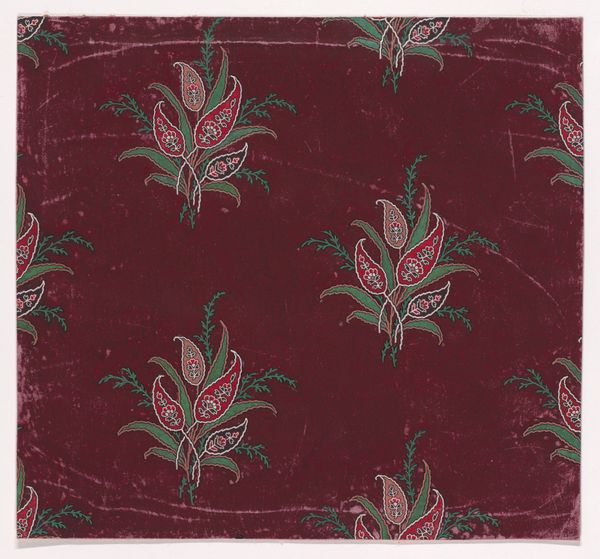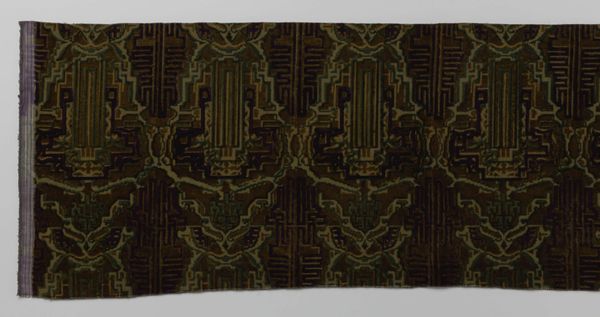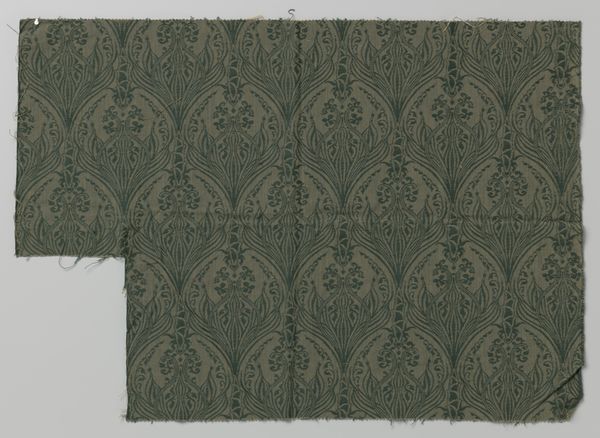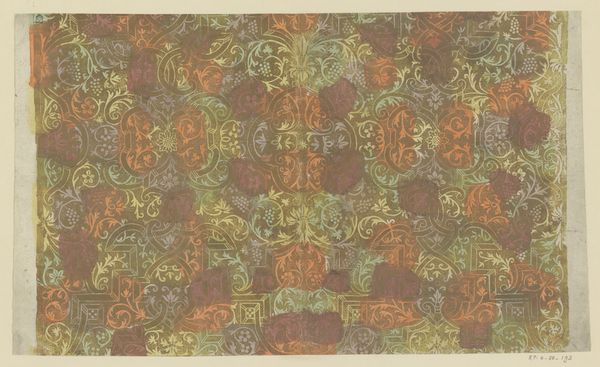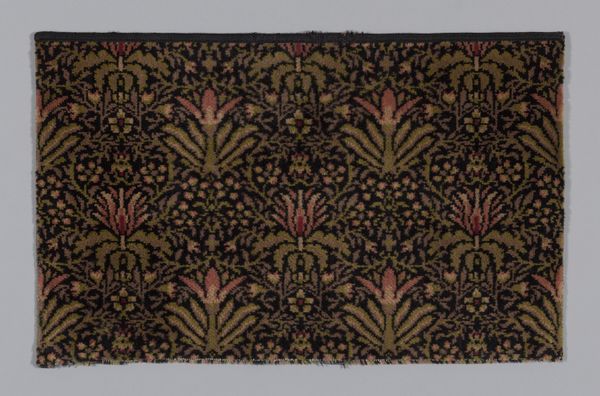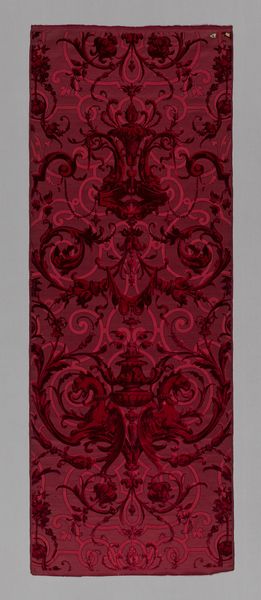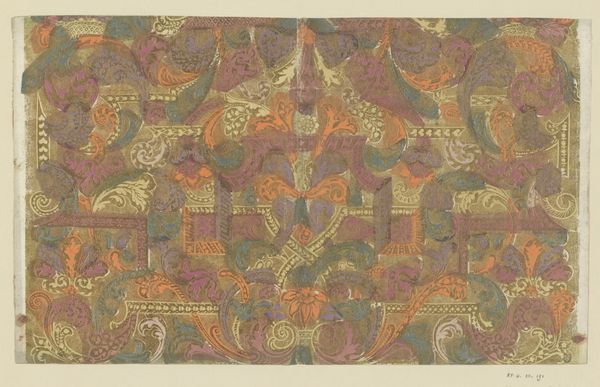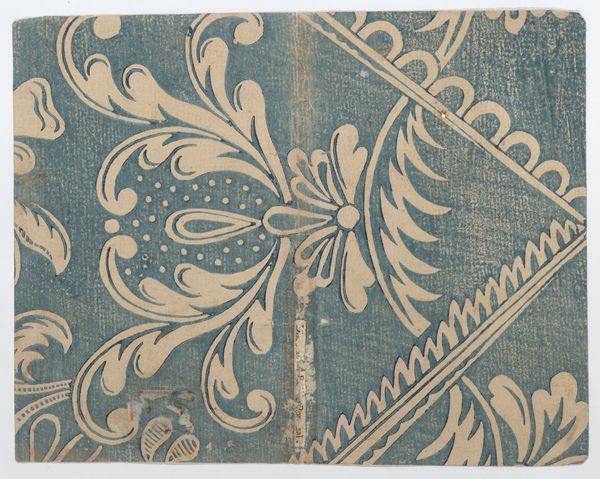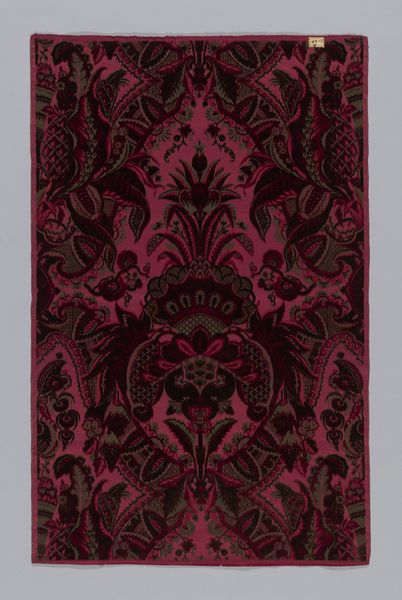
print, textile
#
organic
# print
#
arts-&-crafts-movement
#
textile
#
organic pattern
#
decorative-art
Dimensions: 32.9 × 68.3 cm (12 7/8 × 26 7/8 in.)
Copyright: Public Domain
This is 'Acanthus', a textile design by William Morris, created in England during the late 19th century. Morris was a key figure in the Arts and Crafts movement, which reacted against industrial manufacturing, championing handcraft and design inspired by nature. The deep red hues and the intricate, symmetrical patterns of acanthus leaves and floral motifs are characteristic of Morris's style. But it's crucial to consider the social context: mass-produced textiles of the industrial revolution were often seen as cheap and ugly, and Morris aimed to offer an alternative that celebrated beauty, quality, and traditional skills. While his designs drew inspiration from medieval art and the natural world, they also critiqued the social conditions of his time, advocating for a return to a pre-industrial, more artisanal mode of production. To understand Morris fully, we look at sources like his writings, the records of his firm, and contemporary accounts of the Arts and Crafts movement, all essential for appreciating the social and institutional forces that shaped his artistic vision.
Comments
No comments
Be the first to comment and join the conversation on the ultimate creative platform.
